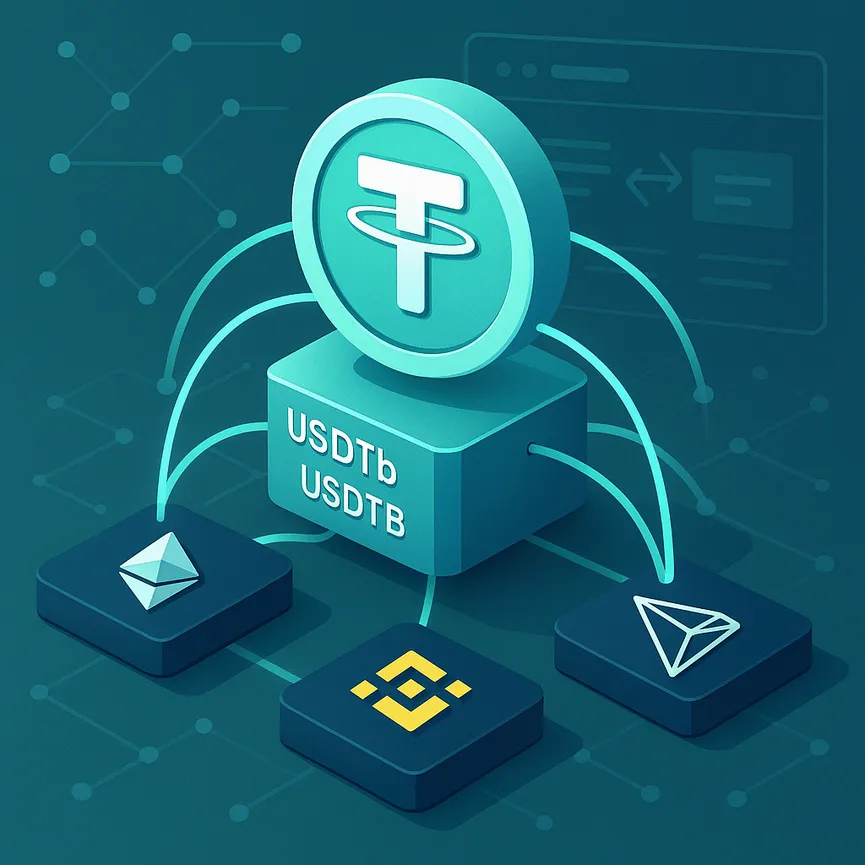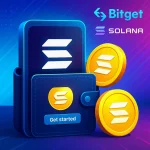If you’ve ever scrolled an exchange deposit page and paused at “USDtb” or “USDTB,” you’re not alone. Many traders ask the same core question: What is USDtb(USDTB), and how is it different from regular USDT? The short answer is that USDtb (often stylized as USDTB) is not a brand-new coin; it’s a label some platforms use to distinguish a network-specific or bridged variant of Tether’s USDT. The longer answer matters because sending the wrong version to the wrong network can be an expensive mistake.
In this guide, you’ll learn how USDtb(USDTB) fits into the USDT family, why the ticker looks different on certain platforms, the exact checks you should run before depositing or withdrawing, the network and fee trade-offs, and how to acquire it safely with a fee-conscious workflow.
A quick definition
- USDtb / USDTB is a platform- or network-specific label that typically represents Tether USDt (USDT) on a particular chain or as a wrapped/bridged representation.
- The “b” suffix commonly appears where exchanges or wallets want to distinguish a chain (e.g., BNB Smart Chain via BEP-20) or a bridged version. You may also see similar patterns like USDT-TRC20 (Tron), USDT.e (bridged on Avalanche), or simply USDt (Tether’s spelling with a lowercase “t”).
- Most of the time, the market value of USDtb tracks USDT 1:1 because they represent the same underlying stablecoin in different forms, but the technical pathway and risks may differ by network.
Why the ticker looks different across platforms
USDT is one of the most widely deployed tokens in crypto. It exists natively on multiple chains (Ethereum ERC-20, Tron TRC-20, Solana SPL, and more) and can also be bridged or wrapped to additional networks. Because of this multi-chain reality, exchanges and wallets must label variants so users don’t mistakenly send funds across incompatible networks.
Common patterns you’ll see:
– USDTB or USDtb: Often a shorthand used by an exchange/wallet to signal a particular network (frequently BNB Smart Chain BEP-20) or a bridged form.
– USDT-TRC20, USDT-ERC20, USDT-SPL: Explicit network tags in the ticker or description.
– USDT.e / USDC.e: “.e” historically indicates a bridged token on some chains (e.g., Avalanche) rather than a native mint from the issuer.
The takeaway: the ticker suffix is a hint. Always confirm the actual network and contract address before moving funds.
How to verify what you actually hold
Before you deposit, withdraw, or send USDtb(USDTB), run these checks:
1) Confirm the network in your wallet or exchange
– Look for “Network: BNB Smart Chain (BEP-20), Tron (TRC-20), Ethereum (ERC-20), etc.”
– The network matters more than the ticker spelling.
2) Verify the contract address on the correct block explorer
– Ethereum: search on Etherscan
– BNB Smart Chain: search on BscScan
– Tron: search on TronScan
– Solana: search on Solscan
3) Check decimals and token name
– USDT typically uses 6 decimals on many chains, but always confirm.
– Ensure the token name and symbol match the official one for that network.
4) Cross-reference with official or reputable sources
– Tether’s network pages: tether.to
– The exchange’s help docs with the exact contract linked.
If USDtb or USDTB maps to USDT on BNB Smart Chain, you should find a BEP-20 contract on BscScan. If it maps to Tron, you’ll see a TRC-20 contract on TronScan. If it’s a bridged variant, the bridge provider should list and verify the contract.
Network differences that affect cost and speed
Even if the value is pegged to 1 USD, the user experience varies by chain.
-
Ethereum (ERC-20)
- Pros: Deepest liquidity, broadest tooling.
- Cons: Gas fees can spike; slower during congestion.
-
Tron (TRC-20)
- Pros: Very low fees and fast finality; popular for transfers.
- Cons: More centralized validator set; ecosystem concentration.
-
BNB Smart Chain (BEP-20)
- Pros: Low fees, EVM compatibility, wide wallet support.
- Cons: Higher centralization vs. Ethereum; watch for token spoofing.
-
Bridged variants on other chains
- Pros: Access to low-fee ecosystems and new DeFi venues.
- Cons: Additional bridge smart contract risk and potential liquidity fragmentation.
If your USDtb(USDTB) is on BNB Smart Chain, you’ll typically enjoy low fees and good speed. If it’s on Tron, fees are usually the lowest. Choose based on your primary use case: cheap transfers (Tron/BNB), Ethereum-native DeFi (ERC-20), or a specific DApp chain you need.
Understanding the risks behind the ticker
- Issuer risk (Tether): USDT is backed by reserves Tether controls. You rely on Tether’s solvency, transparency, and redemption policies.
- Chain risk: Network outages or congestion can delay transfers and increase costs.
- Bridge risk: If USDtb(USDTB) is a bridged representation, you rely on the bridge’s security. Past hacks in the industry highlight this risk category.
- Counterparty risk: Holding on centralized exchanges exposes you to platform risk.
- Blacklist/freeze risk: Some issuers can freeze tokens at the contract level in cases of compliance or theft.
Risk management checklist:
– Prefer native mints when possible for large, long-term balances.
– If using bridged tokens, pick reputable bridges with audits and battle-tested TVL.
– Test with small amounts before large transfers.
– Maintain good network hygiene: verify addresses, memos/tags, and chain settings.
Price, peg, and liquidity considerations
USDT’s peg aims at 1 USD, and USDtb(USDTB) generally tracks that peg because it’s the same underlying stablecoin concept across networks. However:
– DEX pools can temporarily drift due to imbalances or low liquidity on a particular chain.
– CEX markets are typically tighter but still monitor spreads and fees.
– Bridged variants may have thinner on-chain liquidity, affecting large swaps.
Tip: When swapping on a DEX, check slippage and pool depth. On CEXs, check order book liquidity and withdrawal networks offered for your destination.
How to buy USDtb(USDTB) safely with low fees
You can register and trade on a reputable exchange that lists multiple USDT networks, then withdraw on the network you need. If you’re looking for a straightforward on-ramp with competitive fees and multiple network options, open an account at CoinEx using referral code mhz7w.
Step-by-step workflow:
1) Create your account
– Visit CoinEx and complete signup (referral code: mhz7w).
– Set up 2FA and anti-phishing codes for security.
2) Deposit or purchase
– Deposit crypto you already hold, or use fiat channels available in your region.
– Look up USDT markets and confirm the network options supported.
3) Identify the exact variant you want
– If your wallet expects USDT on BNB Smart Chain, choose the BEP-20 network on withdrawal; on some interfaces, this may be labeled similarly to “USDTB/USDT-BEP20/USDT(BSC).”
– If your destination is Tron, select TRC-20, and so on.
4) Withdraw a small test amount first
– Send a tiny transfer to verify the address and network.
– Once confirmed, send the full amount.
5) Label everything
– In your wallet, label entries like “USDT on BSC (BEP-20)” or “USDT on Tron (TRC-20).” This prevents mistakes later.
Why use CoinEx for USDtb(USDTB):
– Multi-chain support: Choose the exact USDT network you need.
– Transparent fees: Preview withdrawal fees per network.
– Smooth KYC-light regions: Depending on your jurisdiction, you may have streamlined access.
– Referral benefit: Open your account via CoinEx with code mhz7w for a clean onboarding path.
USDtb(USDTB) vs. USDT: what’s actually different
- Value goal: Same 1 USD target per token.
- Function: Stable unit of account and transfer token.
- Key difference: The chain or bridge context. That impacts gas fees, speed, and risk profile.
If you see USDtb or USDTB in a wallet or exchange, it usually means “USDT, but specifically on this network or via this wrapper.” Treat it as you would USDT but apply chain-specific best practices.
Practical do’s and don’ts
Do
– Double-check the chain and contract address before any transfer.
– Keep a small balance of the chain’s native token for gas (BNB for BSC, ETH for Ethereum, TRX for Tron).
– Start with a test transaction.
– Bookmark official links and block explorers.
Don’t
– Send USDT from one chain to an address on a different chain unless a cross-chain bridge is explicitly involved.
– Assume two tokens with similar names are interchangeable.
– Rely on screenshots or past history; always verify current details.
Builder notes for integrating USDtb(USDTB)
If you’re a developer integrating payments or balances:
– Confirm the token standard and chain:
– ERC-20 (Ethereum and EVM chains)
– BEP-20 (BNB Smart Chain)
– TRC-20 (Tron)
– SPL (Solana)
– Normalize decimals in your code; many USDT variants use 6 decimals but don’t assume.
– Use on-chain allowlists for known contract addresses.
– Resolve ticker ambiguity by storing chainID + contract address rather than symbol.
– Consider rate-limiting and alerting on cross-chain deposits that do not match the expected network.
Frequently asked questions about What is USDtb(USDTB)
-
Is USDTB the same as USDT?
- Functionally, yes—both track 1 USD. But USDTB/USDT on a specific chain may carry different fees and risks versus USDT on another chain.
-
Can I send USDTB on BNB Smart Chain to a Tron USDT address?
- No. Networks are not interchangeable. You need a bridge or an exchange withdrawal on the correct network.
-
How do I know which one my wallet supports?
- Your wallet will state the network and often list the token with the correct contract. Add the token by contract address to be safe.
-
Is a bridged USDtb riskier than a native USDT mint?
- Generally yes, because bridged tokens add smart contract/bridge risk. Choose according to your needs and risk tolerance.
-
Why is my fee different on different networks?
- Gas models differ per chain. Tron and BSC are usually cheaper; Ethereum can be higher during congestion.
Quick checklist before every transfer
- I verified the correct network for the destination wallet.
- I matched the token contract address via a trusted block explorer.
- I have enough native gas token in my sending wallet.
- I tested a small transfer first.
- I saved the working configuration for future use.
Where to get started right now
If you want to buy, hold, or move USDT across the networks you care about—whether it’s labeled USDTB, USDtb, or just USDT—open an account with CoinEx and enter referral code mhz7w. From there, pick the exact network for your withdrawal, keep fees low, and manage your stablecoin stack with fewer surprises.
Additional resources worth bookmarking
- Tether official site: tether.to
- Etherscan token search: etherscan.io
- BscScan token search: bscscan.com
- TronScan token search: tronscan.org
- Solscan token search: solscan.io
- CoinEx registration with code mhz7w: CoinEx
By treating “What is USDtb(USDTB)” as a network label question—and not as a different economic instrument—you’ll avoid the most common mistakes and keep your transfers fast, cheap, and safe across the crypto landscape.





